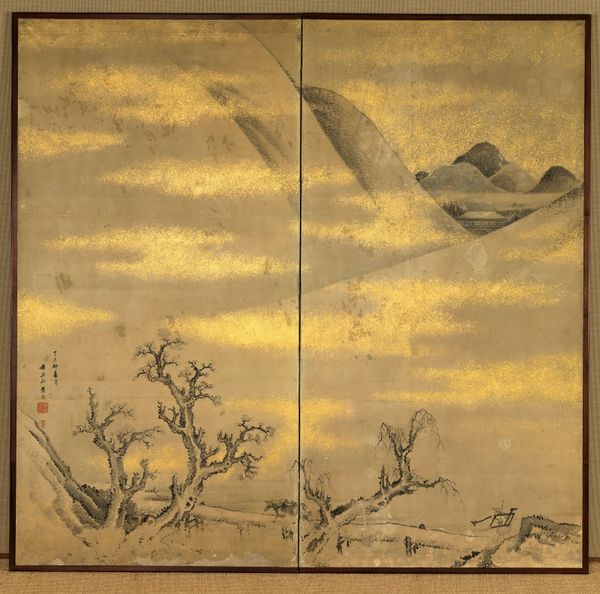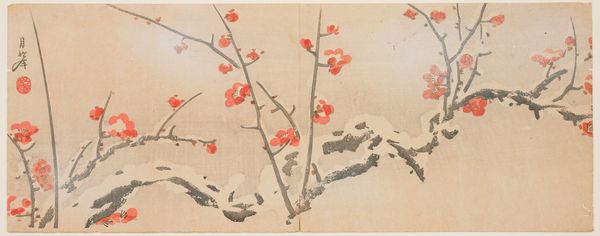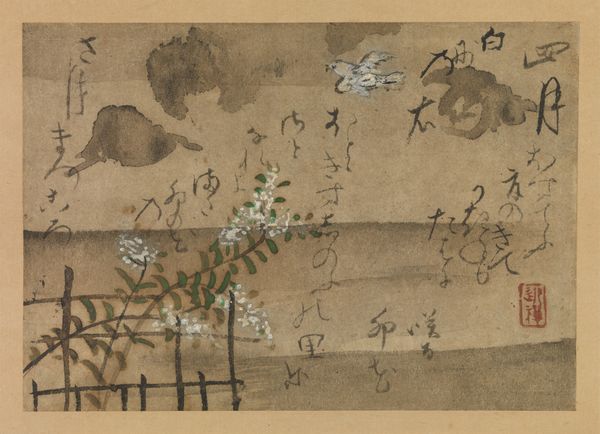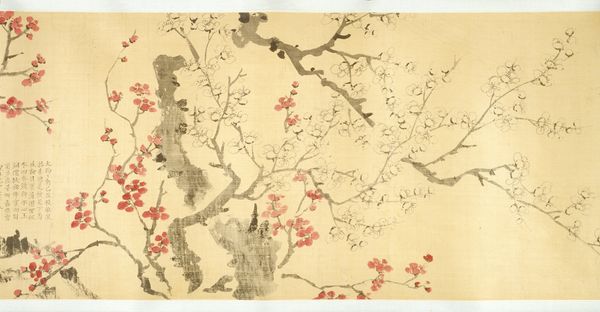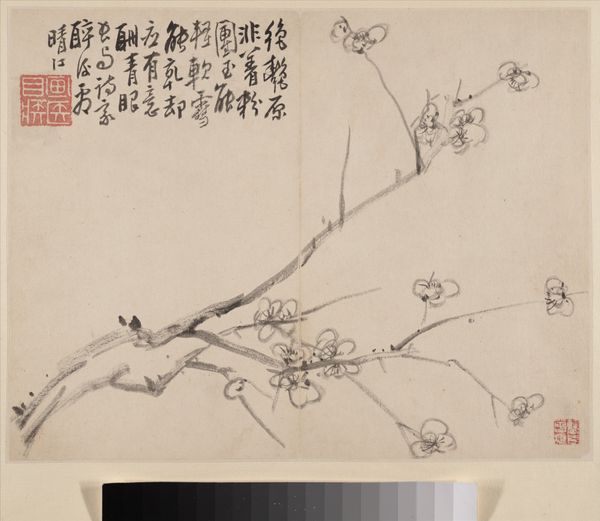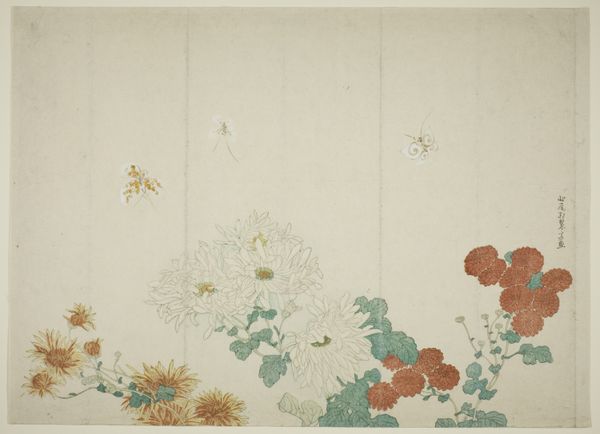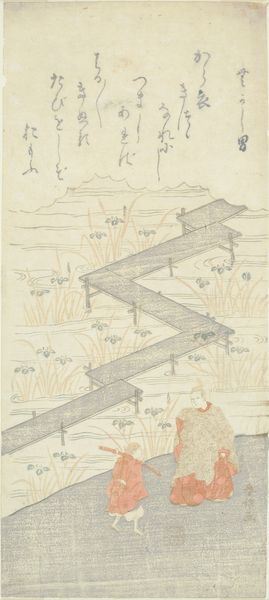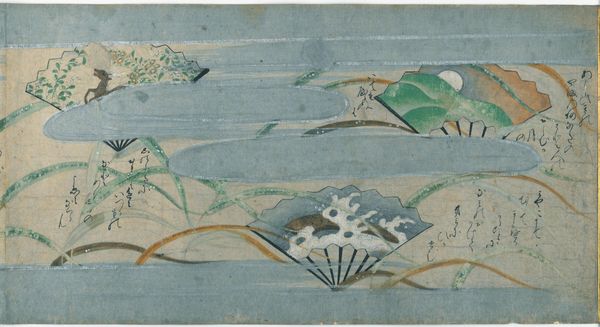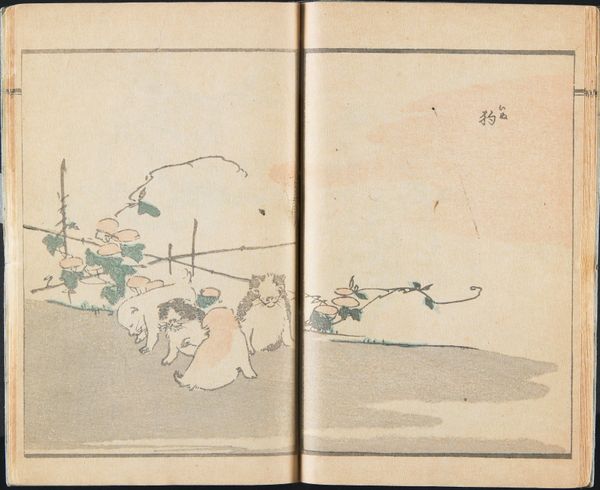
Dimensions: 9 3/16 × 11 9/16 in. (23.4 × 29.4 cm) (image, sheet, uchiwa-e)
Copyright: Public Domain
Curator: Welcome. Here we have "Insects Flying Over Water" by Yamada Hōgyoku, made around the 1830s. Editor: It's so sparse, almost like a breath. The way the blue washes across the page gives a real sense of light and airy atmosphere. Curator: It certainly departs from more formal depictions. Hōgyoku was working in a time when printmaking was booming. Ukiyo-e artists were shaping visual culture, informing how the public saw the world and expected to see it represented. Editor: And this piece feels like it's reacting to that commercialization, doesn't it? Look at the bare paper showing through. It draws attention to the materiality of the piece—the ink, the paper, the very act of applying pigment. So simple, almost a sketch. Curator: That tension between mass production and individual expression is key. Consider how artists positioned themselves. Were they craftspeople fulfilling a market demand, or intellectuals commenting on the socio-political landscape through imagery? Editor: The choice of subject makes me think about production as well. What draws the artist to insects? The natural world isn't this pretty vista we see idealized in so much art. Insects are…working. I'm curious how his access to materials, and the networks of exchange influenced the art, the ink. How it dictated his production capabilities. Curator: Interesting points. This piece is part of the Mia's collection of Japanese art, representing the movement towards simpler forms during the late Edo period. The attention to these often overlooked parts of nature also signals something— an elevation perhaps? Editor: The translucence, those delicate clover leaves, really capture a fleeting moment. Looking at the method, I just can't help but think about the quiet labor of observation needed to distill such essence. Curator: Absolutely. There's a subtlety here, a deliberate stripping away. Editor: It makes you appreciate what’s there even more, doesn't it? The materiality, the space around each carefully rendered form. It becomes…meditative. Curator: It prompts a wider reflection on nature’s role within cultural value. Thank you. Editor: Indeed, seeing it this way deepens my interest, definitely.
Comments
No comments
Be the first to comment and join the conversation on the ultimate creative platform.
